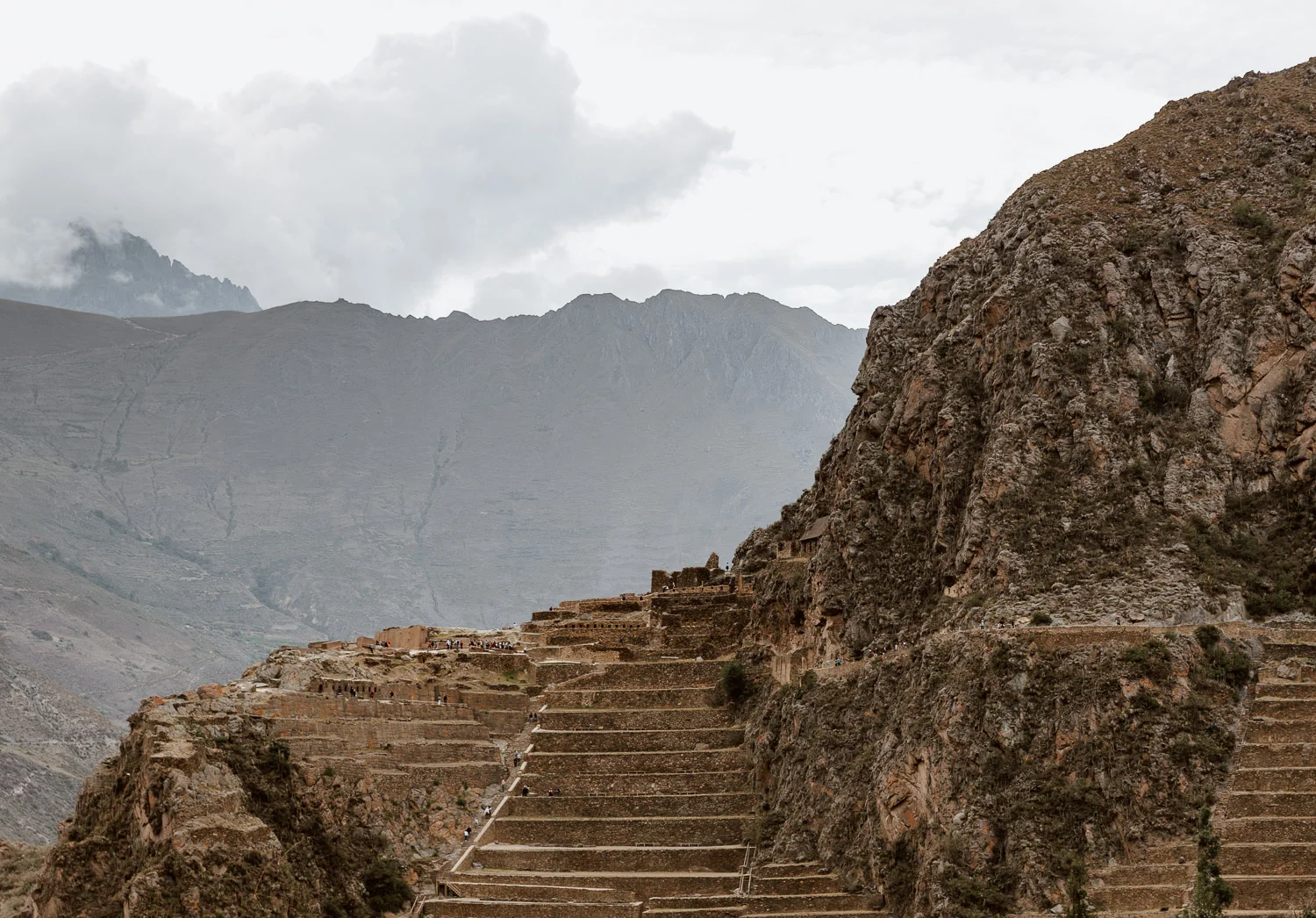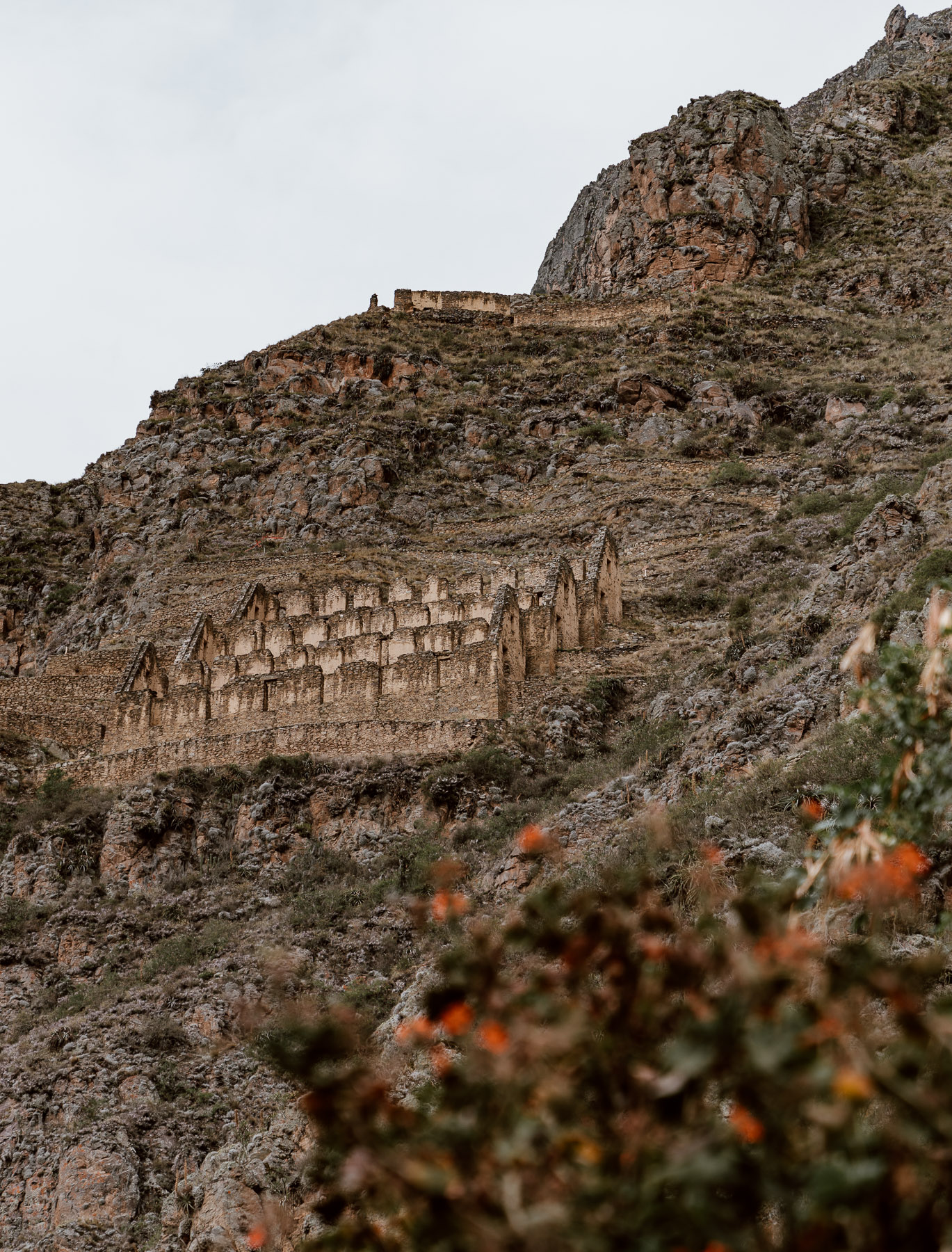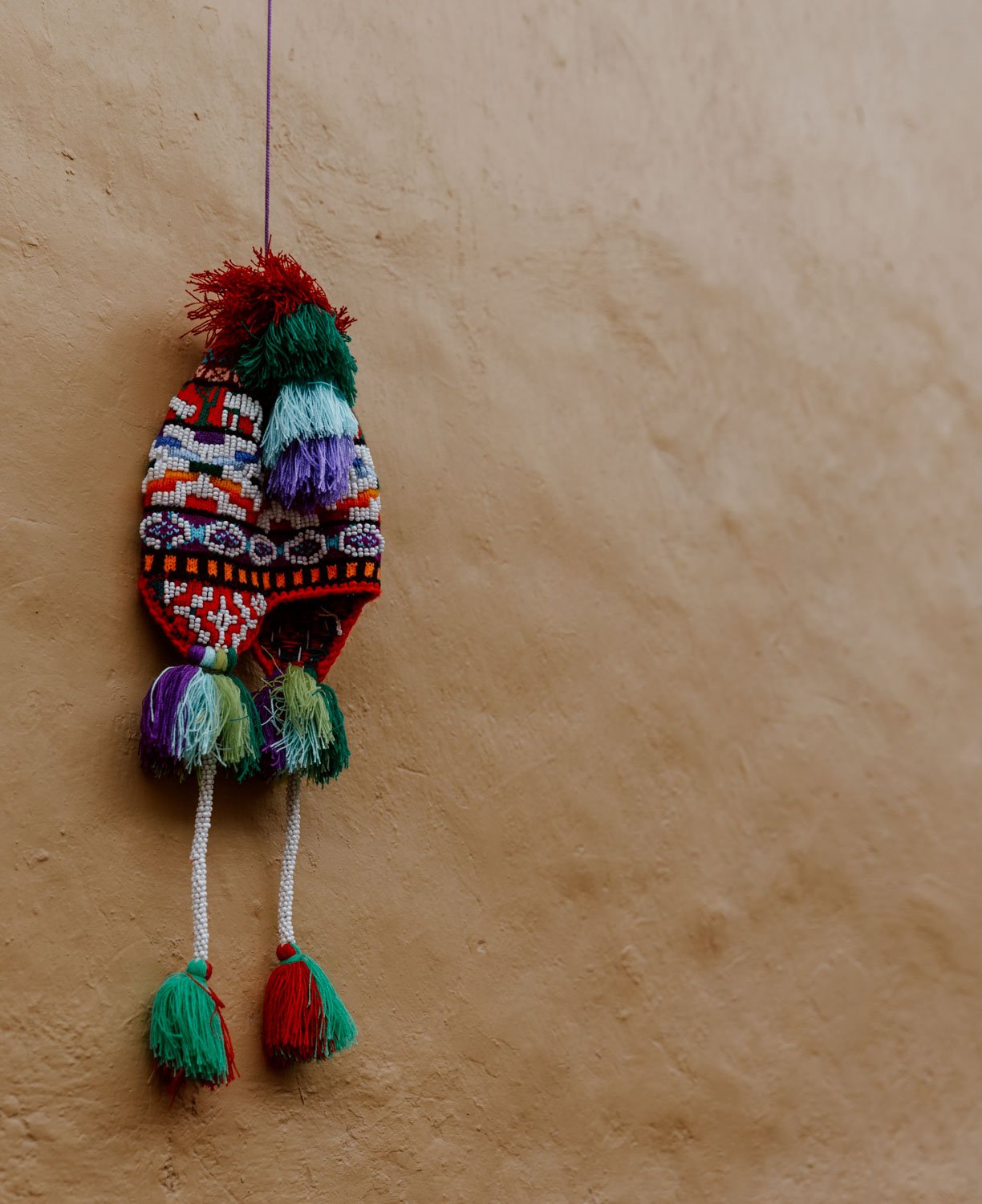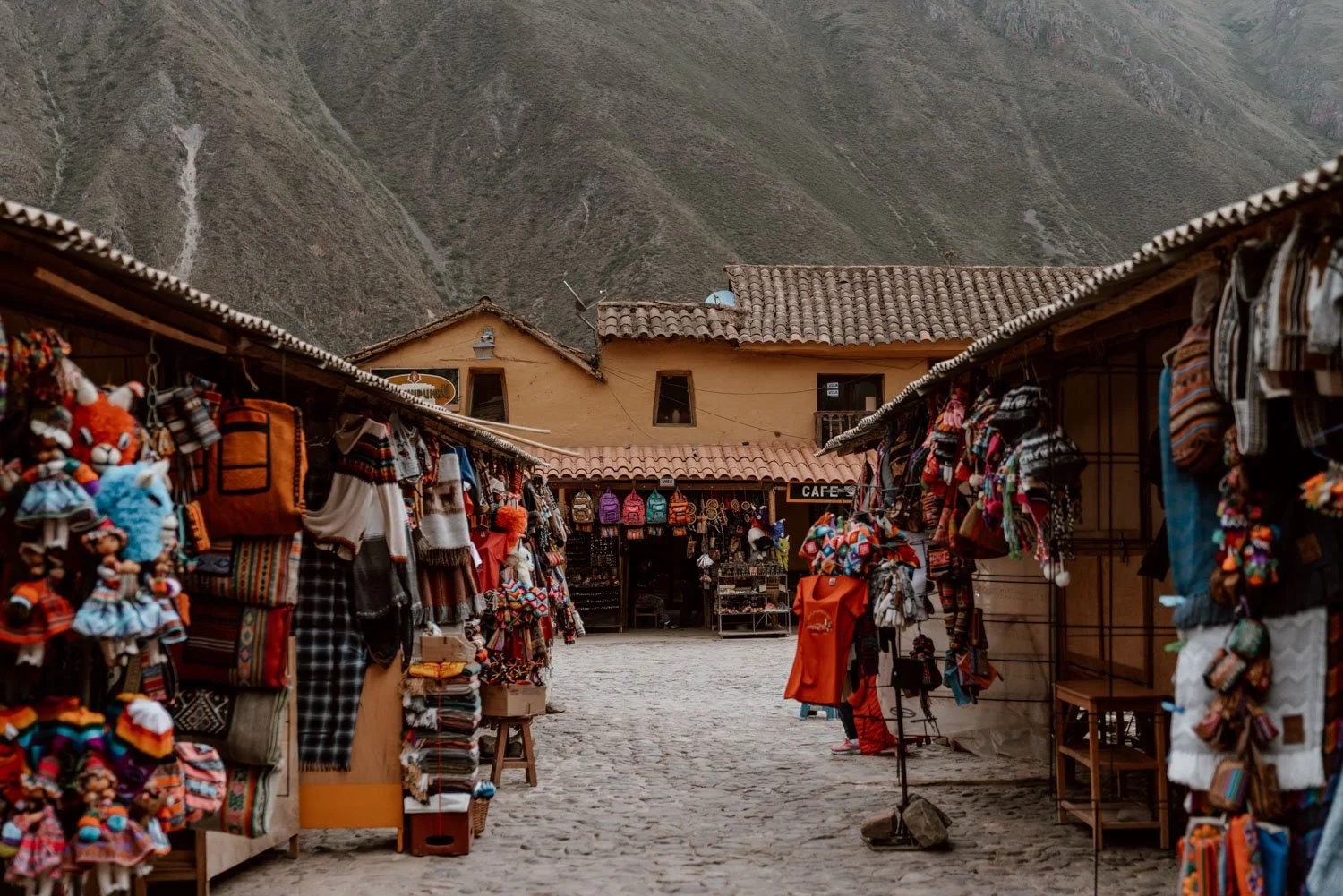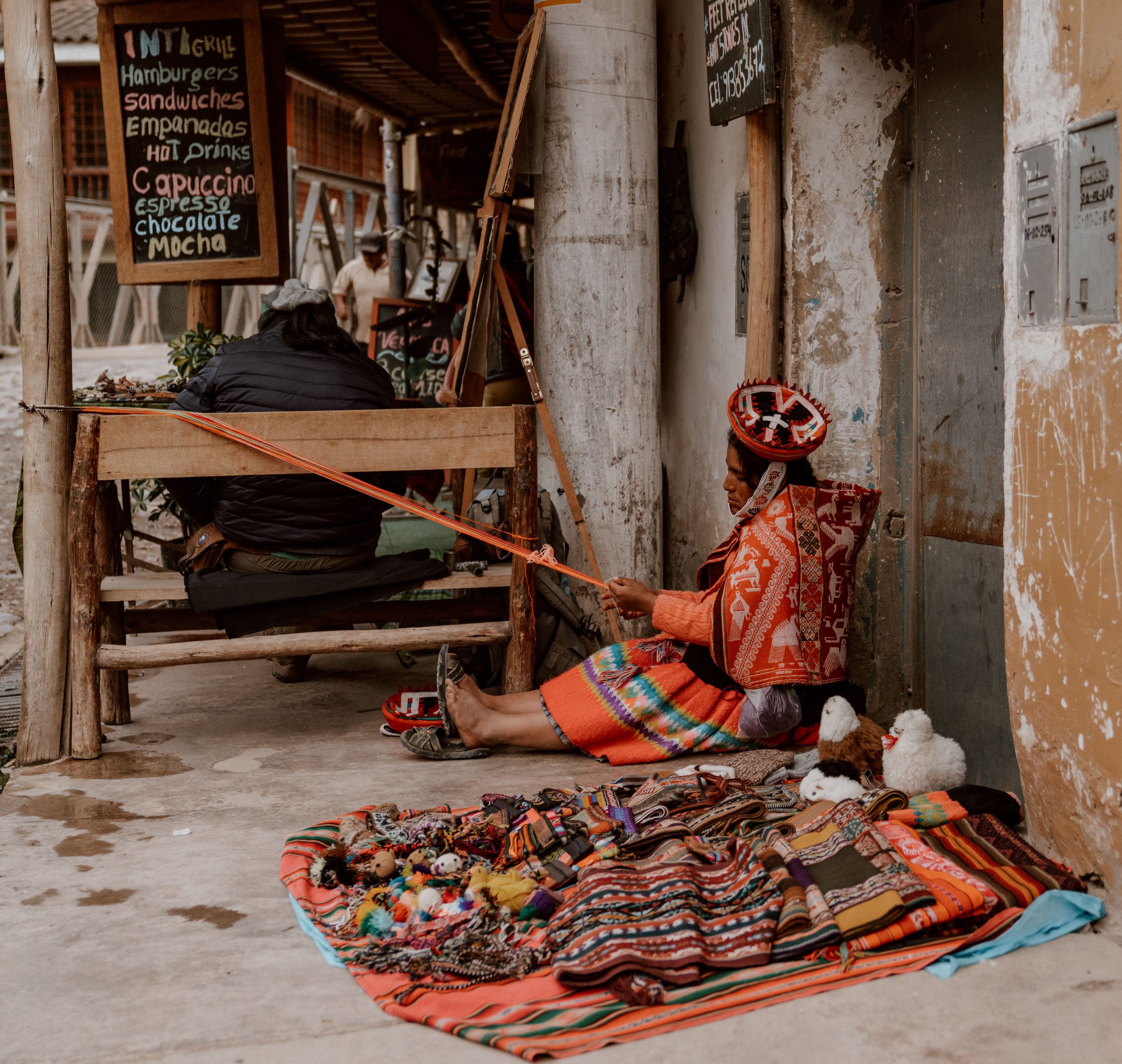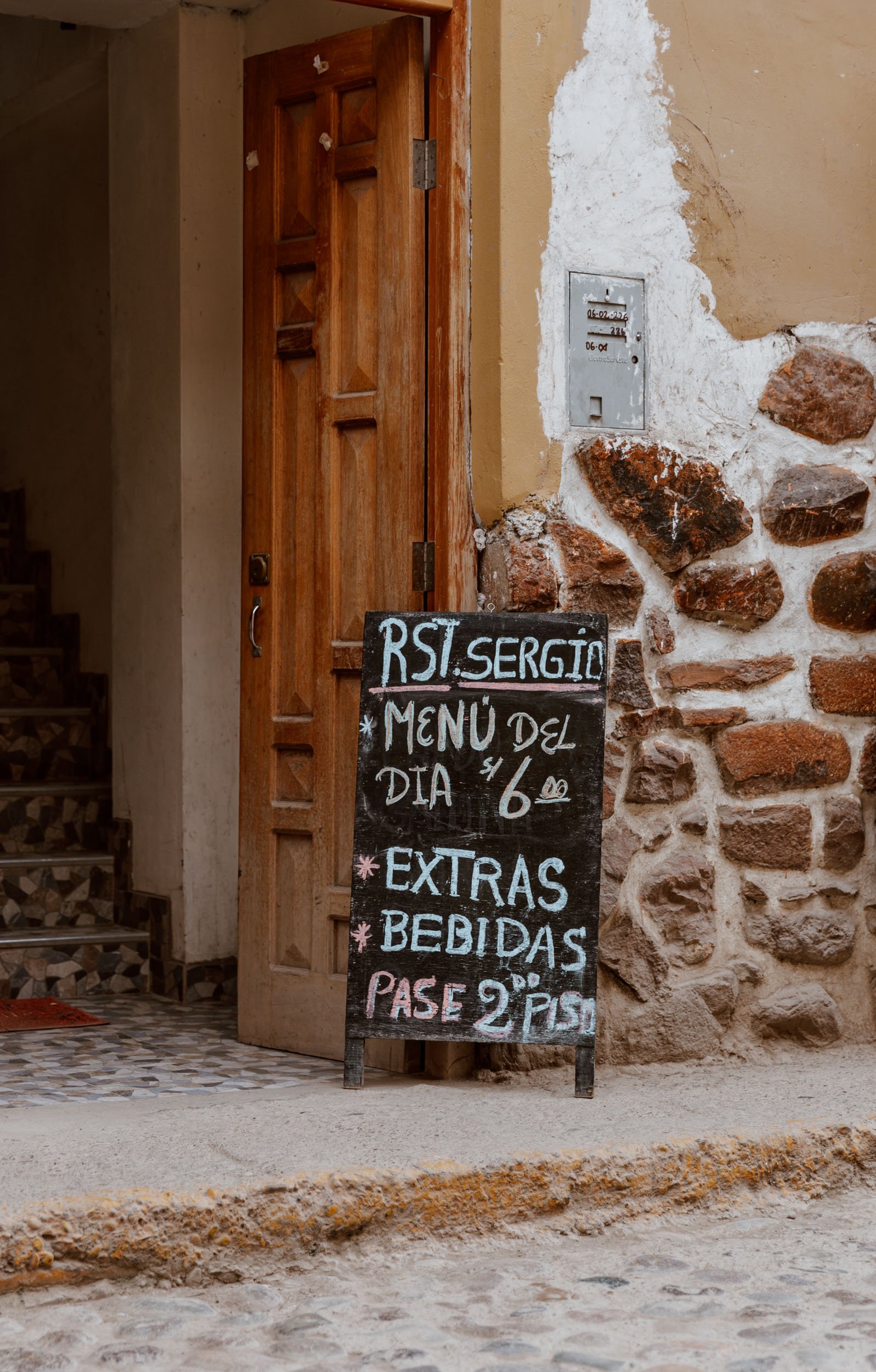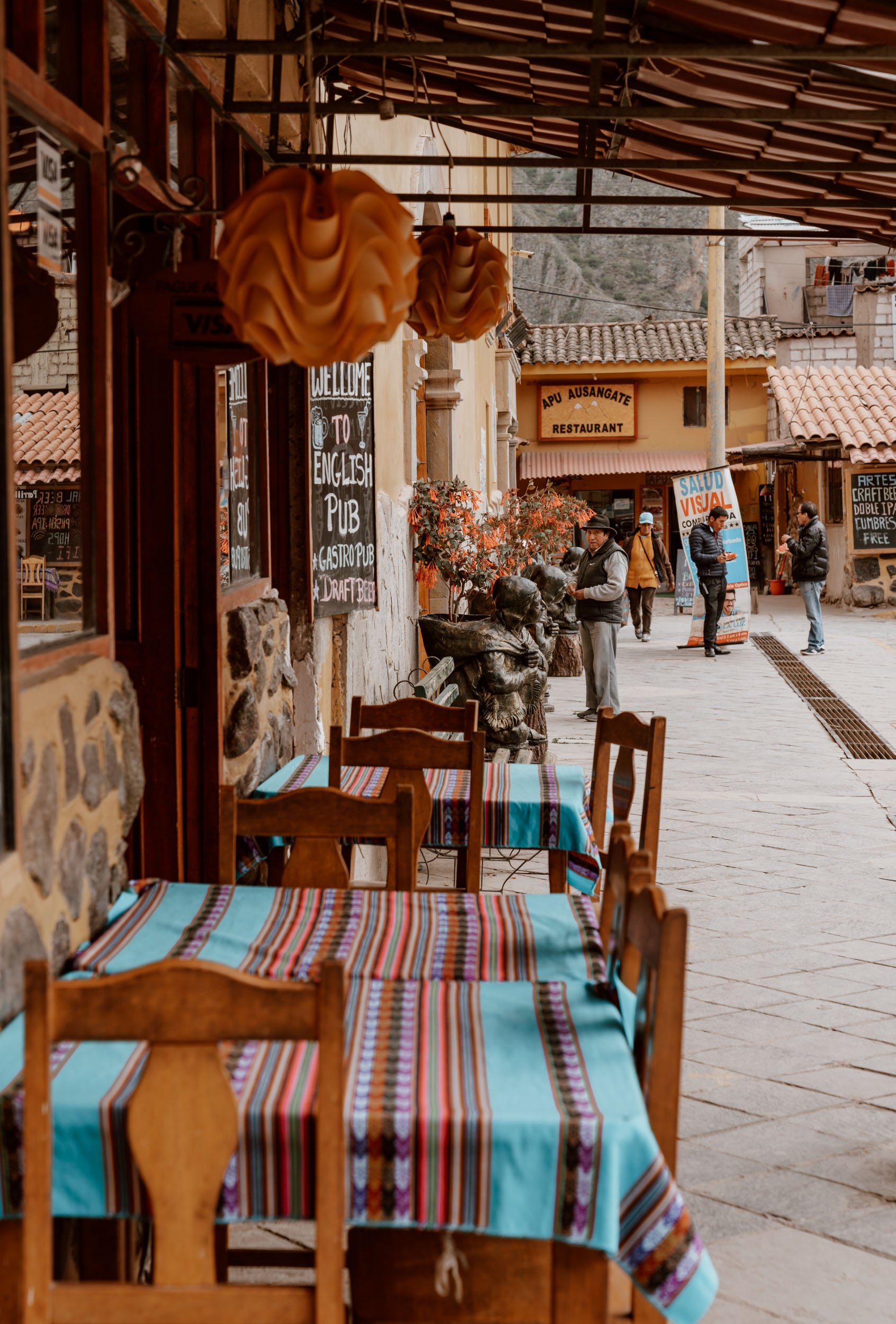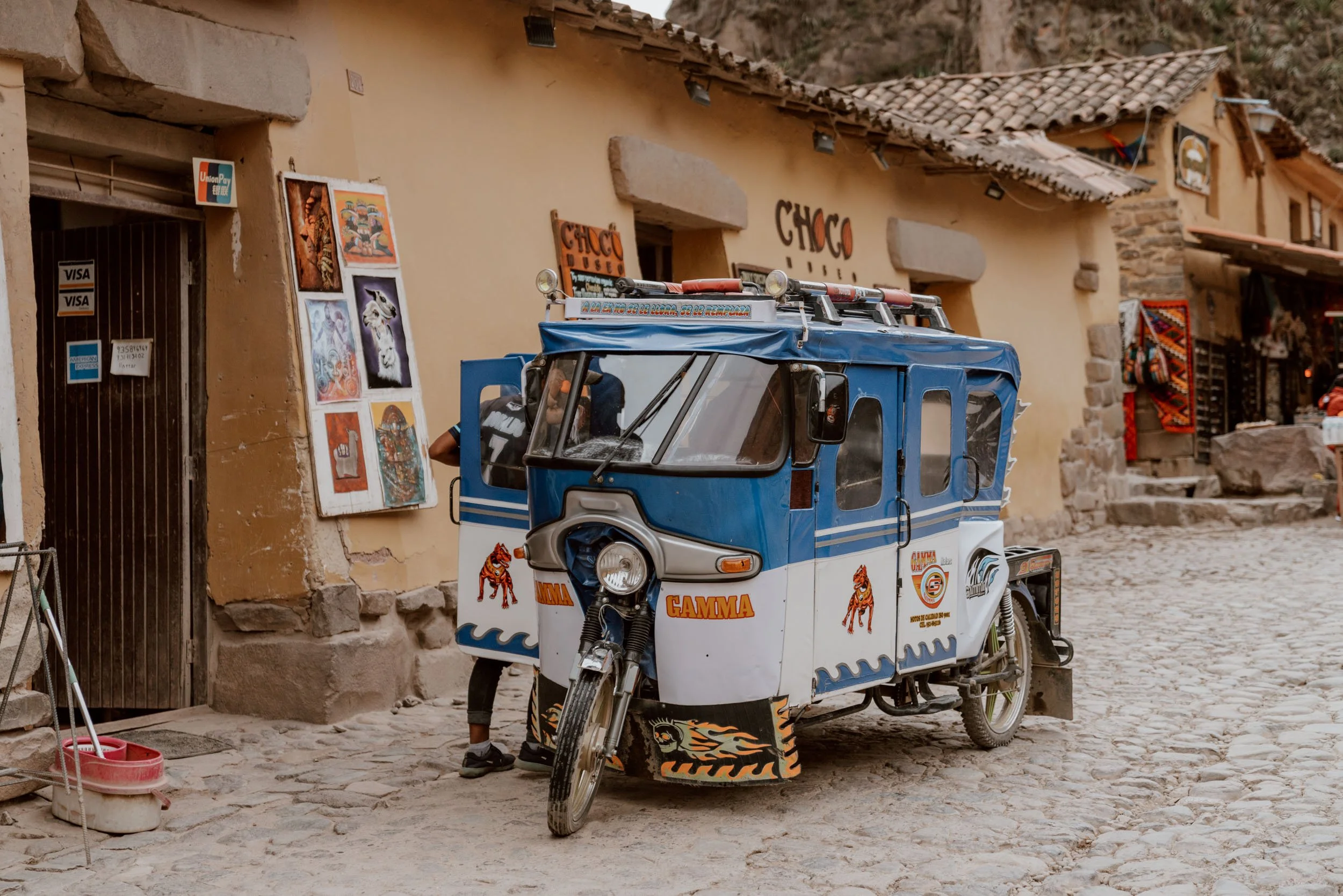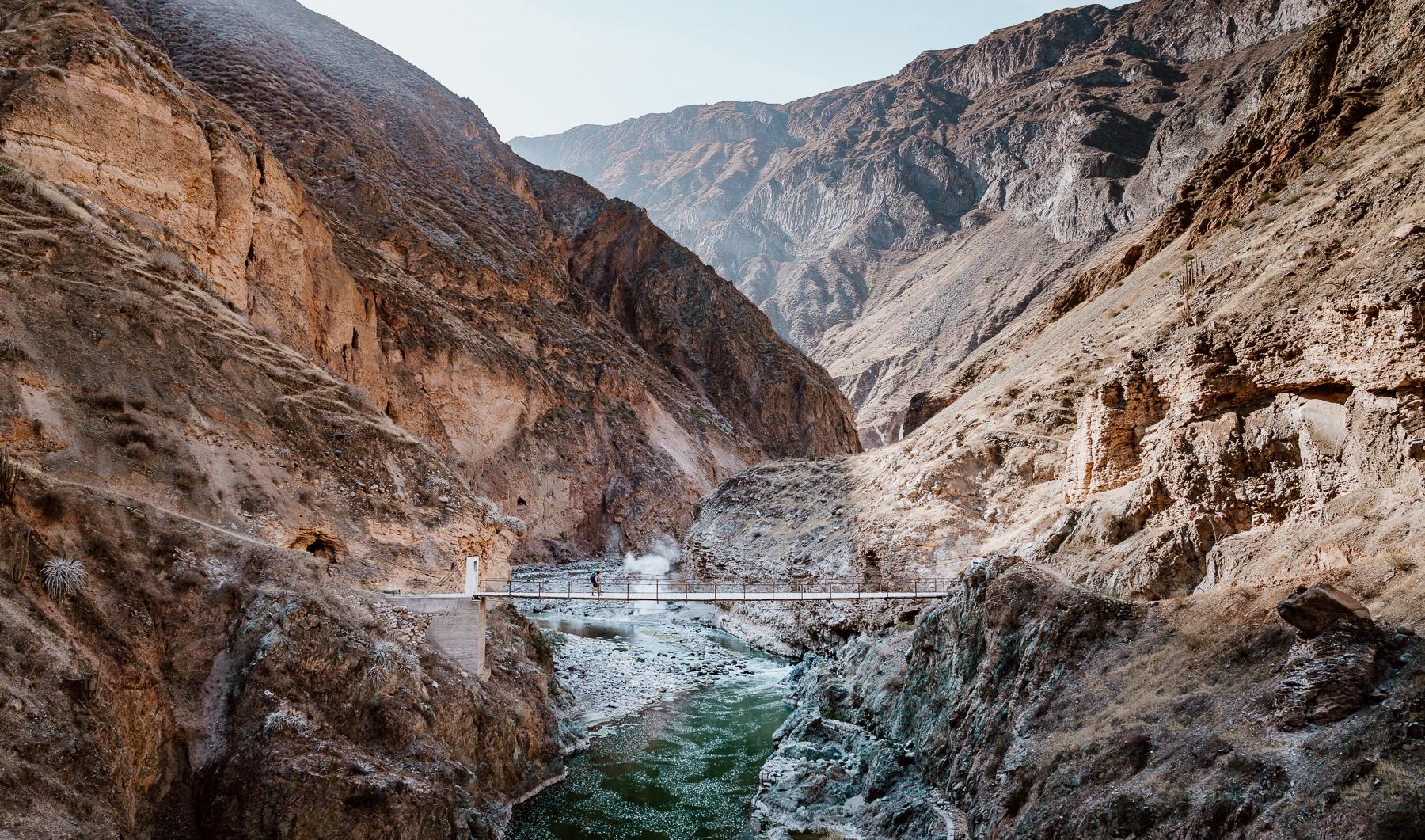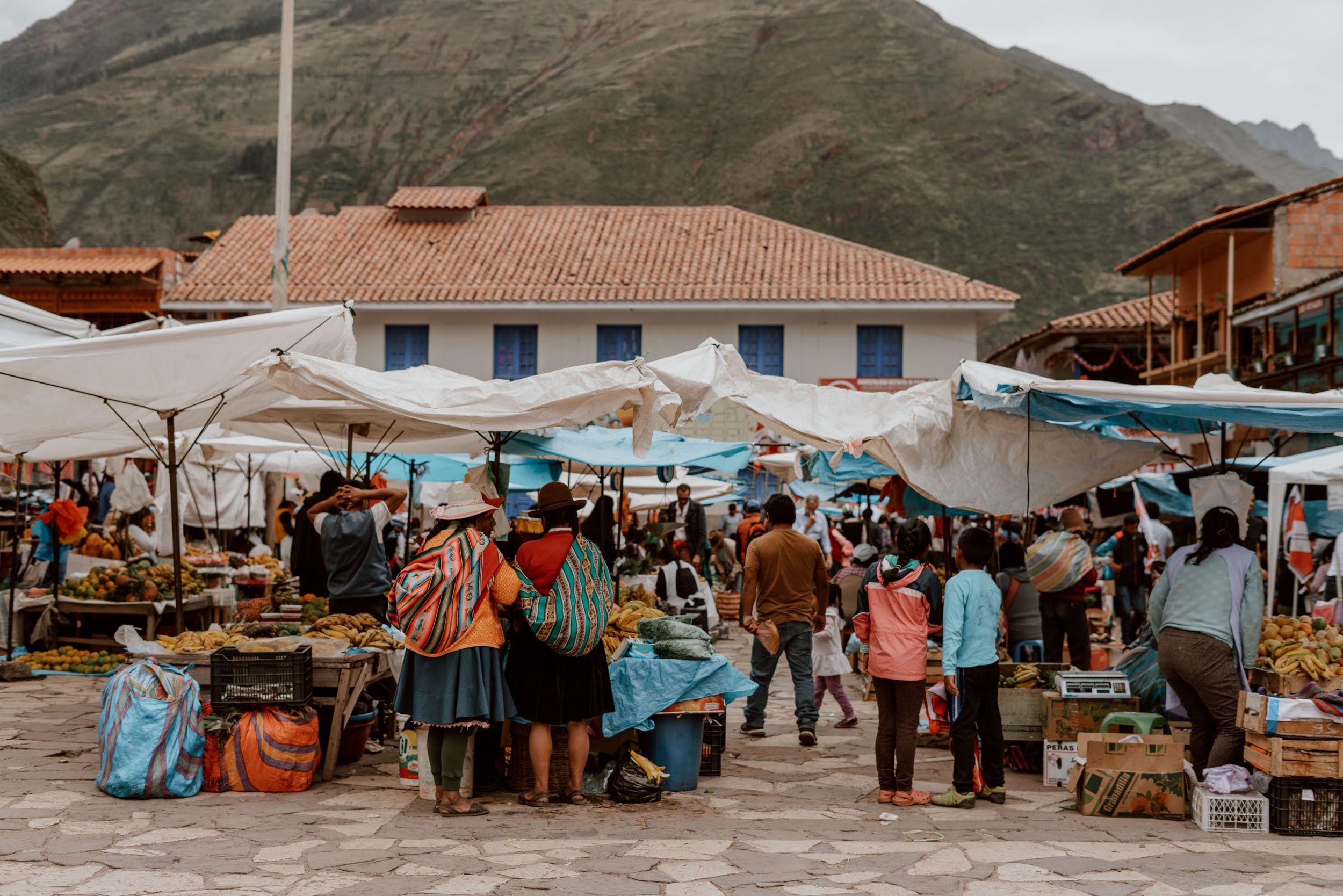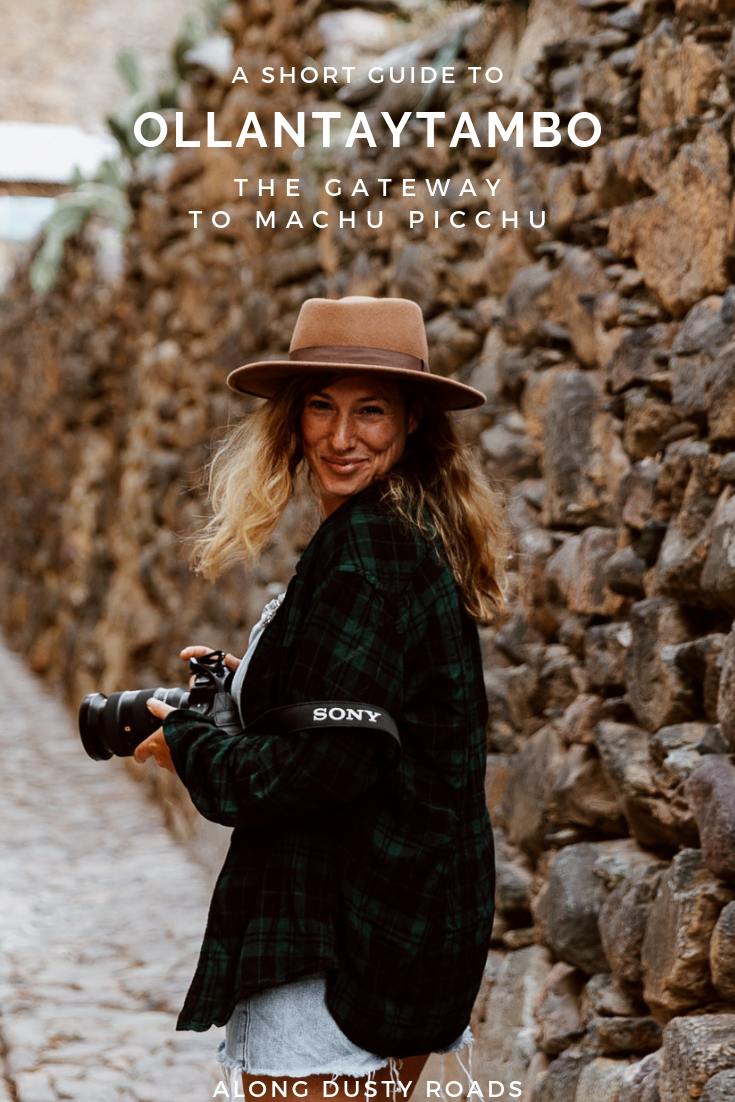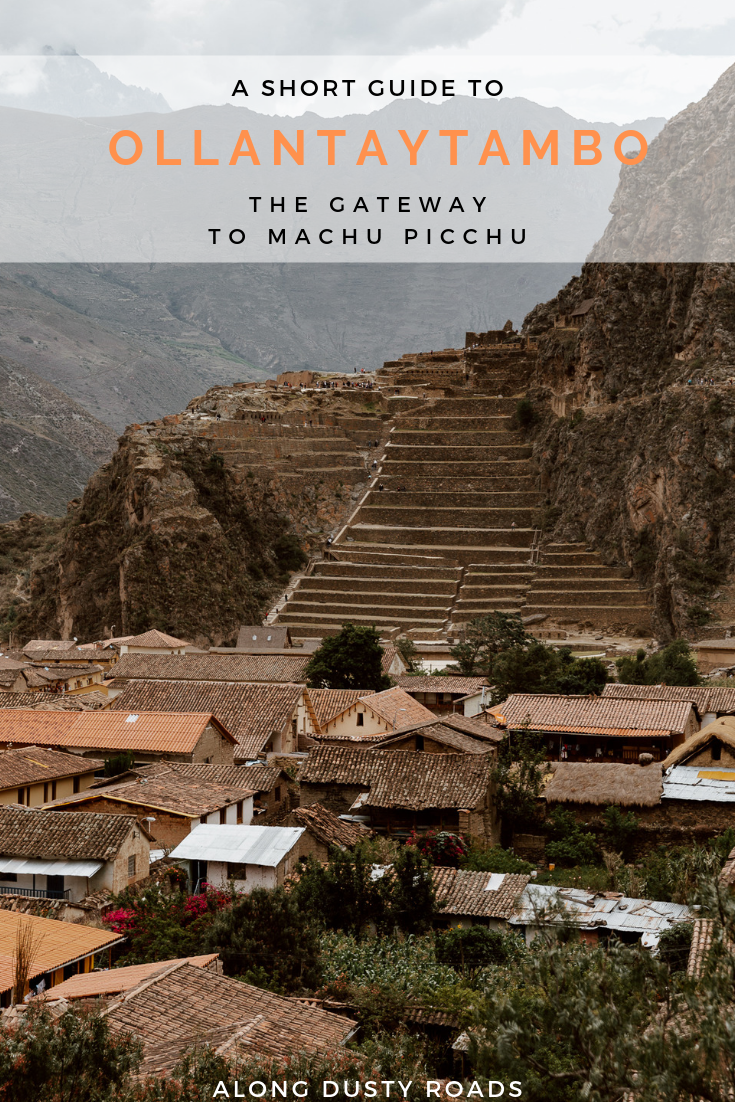If you’re planning on visiting Machu Picchu, you’ll almost certainly pass through Ollantaytambo, Peru. Stay for longer than it takes the train to pass through however, and you’ll discover a charming indigenous town deserving of a few hours in its own right!
In this guide discover everything you need to know to plan your visit, including the best things to do in Ollantaytambo Peru.
Updated January 2024
There are two types of travellers in the small Incan town called Ollantaytambo: those who have just come back from Machu Picchu, and those who are just about to visit.
A beautiful two hour drive from Cusco (do not fall asleep on this!), the town is the hub for people taking the train toward the citadel in the clouds, starting their four-day Inca Trail hike, and a handful considering a walk beside the tracks to Aguas Calientes. Due to this it gets a lot of foot traffic and a lot of tourist turnover each day, with most individuals and groups only sticking around for only one night.
However, Ollantaytambo should be understood as a special place that stands very much on its own two feet for a few good reasons - and very much worth making a stop at before you visit Machu Picchu, rather than simply going directly from Cusco. The town, continuously inhabited since the 13th century, was actually the only place in Peru which defeated the Spanish army (or at least held them back successfully until they returned with more forces) and remains a leading example of Incan architecture.
Its location within the Sacred Valley is also simply stunning.
In fact, due to the tourism infrastructure it has in place, it’s a great alternative base for discovering the secrets of the wider Sacred Valley (or getting one of your most memorable haircuts ever, as Andrew can testify).
So, whether you’re staying for one night or two, here’s our advice on the best things to do in Ollantaytambo, where to stay in town, transport options, and some tips on the best places to eat amongst the dozens of options.
And if you’re reading this and still not exactly sure how to get to Machu Picchu from Ollantaytambo, we’ve got all the answers for you too!
ollantaytambo at a glance
Transport / Regular departures to Aguas Calientes & 1.5 hours from Cusco by colectivo
Highlight / Ollantaytambo ruins (need boleto turistico)
Ideal / Good base to explore the Sacred Valley
Visit / Easy day trip from Cusco either with public transport or organised tour (this one combined with Pisac is super popular)
Inca / Start point of the famous Inca Trail
Stay / Inka King is a popular & highly-rated guest house, but for something a little fancier check out Sol Miranda (or try this once in a lifetime mountainside pod!)
the Best Things to Do in Ollantaytambo, Peru
Explore the Ollantaytambo Ruins
| The Main Ollantaytambo Archeological Park
Snaking up the hills, these ruins define and dominate Ollantaytambo from nearly every angle. However, it’s important to try and get to them in the early morning or later the in the afternoon as it becomes incredibly crowded once the large tourist buses turn up (however, it’s quite entertaining to watch hundreds of humans from a distance as they make their way up the 200 large steps and somewhat resemble an ant colony). The town is at an altitude of 2,792 m, so don’t be surprised if you’re a wee bit out of puff making your way to the top.
Sites not to miss include:
The Terraces.
Baño de la Nusta, a beautiful fountain at the base of the ruins which was used for liturgical purposes and flows from carved stone into a pool.
The Sun Temple, composed of six huge monoliths (perhaps the most impressive part of the ruins)
Inkawatana, the ruins of a fort from which you have gorgeous sweeping views of the surrounding countryside.
Entry to the ruins is only possible with the Cusco Boleto Turistico - a multisite ticket which covers many of the best Sacred Valley ruins. It is not possible to buy a single entry ticket to Ollantaytambo, so find out more about the Boleto Turistico, where to buy it, and its three ticket price packages in this post.
Those passionate about archeological sites could easily spend hours here, but most people should allow 1-2 hours to explore the site at your own pace. The ruins are open from 7am to 5.30pm and if you’d like to avoid the crowds, visiting earlier or later (before or after the tour groups leave) will make for a more enjoyable visit.
| Enjoy The View from The Depositos de Pinkuylluna
A great free view over Ollanta (as the locals call it) and its imposing mountains is available from these old storehouses - it’s perfect for golden hours vibes. They’re also much less visited than the Terraces and Ruins, so offer the opportunity to escape the crowds and work up a sweat too.
To find the trail, simply go down Lare Street and you will see a set of the stairs and sign on your right to take you on the trail; the start point is also clearly pinpointed on Google maps if you type in ‘Pinkuylluna’. The walk up takes 30-45 minutes, and be careful on the way down!
The site is free to visit, even without the Boleto Turistico.
| Quellorakay
Located a few minutes walk from Ollantaytambo cemetery, Quellorakay is a small Incan site with views out over the Urubamba River.
If you’re looking to escape the crowds, this is where you should head!
You can find the site here on Google Maps.
Top Tip // If you’re looking for a relatively easy hike from Ollantaytambo that leads to more ruins (although this time, pre-Incan) consider the 9 kilometre there-and-back trail to the Pumamarca Ruins. You can find the ruins here on Google Maps, and details of the hike alongside a map here.
Explore The Old Town Streets
For a true insight into life during the Incan times, don’t miss the four or five streets which compose the oldest part of Ollantaytambo, also known as Qosqo Ayllu.
Here, no matter what the weather, it will always sound like it’s raining. The reason? The town’s unique and incredibly well preserved Incan open-draining system which runs straight through the centre of many of its oldest cobblestone streets (if you don’t spot them in time, expect wet feet).
Lined with original Incan walls, walking these backstreets feels much like stepping back in time - and as Ollantaytambo is so compact, you’ll never really get lost.
You’ll likely encounter this section of town on your own, unguided wanderings, but if short on time just head north from Plaza de Armas towards here.
Stop By Mercado San Pedro
Just of the the central plaza, this local’s market is a joy to walk through and get an insight into day-to-day life here; in somewhere that has no shortage of tourists, it has remained defiantly authentic (a good thing).
Grab your fresh produce for hostel cooking downstairs (alongside snacks for your Inca Trail hike) and head upstairs for a large hot plate of whatever’s good that day, at a very reasonable price!
Top Tip // For other tasty eats, consider stopping by the Choco Museum. Whilst not a museum in the strictest sense, it does sell delicious chocolatey-treats, as well as offering an excellent bean-to-bar chocolate making class.
Browse The Souvenir Market
If you are on a shorter trip to Peru, then you’ll enjoy spending some time exploring this small but well-stocked open-air souvenir market (also known as the ‘Mercado Turistico’).
Found at the base of the ruins - you’ll pass through it to enter the terraces - it has all the usual fare one would expect to see in a Peruvian tourist spot and makes no claims to be anything other than just that. Haggling is part of the process, but remember to only try and get a deal that is fair for everyone involved in the transaction.
Top Tip // A few metres away from the market, you will find ‘Awamaki’, a store selling beautiful artisanal clothing and homewares made by local indigenous women. This however, is only half the story - Awamaki is actually a non-profit, who work with Andean artisans to support the creation and growth of women-led cooperatives dedicated to the craft of Quechua textiles.
Additionally, they also co-create sustainable tours - weaving lessons, language classes, community-led cultural experiences - connecting visitors to the Sacred Valley the artisans in its Quechua communities.
You can book at tour with Awamaki here, see their site for further information, or find their store on Google Maps.
A Sacred Valley Space
If you’re keen to avoid spending too much time in Cusco (but make sure to read our favourite things to do in Cusco first!), then Ollantaytambo’s small town vibe may be a much more attractive alternative, allowing you to discover the Sacred Valley a little slower and on your own terms. Once the large crowds have come and gone each day, it’s got a pretty charming small town vibe to it and there remain so many pockets of authentic Peru in amongst the rest of us gringos.
Another alternative town to stay in as part of a slower Sacred Valley experience would be Pisac.
Where to Stay in Ollantaytambo, peru
The most unique accommodation experience in all of Peru is actually located just outside Ollantaytambo (if you’re brave enough to spend the night in a glass pod suspended off the mountainside).
For everyone else, there’s no shortage of locally run hostels, hotels, and guesthouses catering to every travel style. You will always be able to find somewhere cheap and cheerful if you just turn up (less possible in the June-September high season), but if you prefer to book and plan ahead then our recommendations are:
Casa Samay | A super popular option with friendly staff, colourful rooms (dorms and privates) plus a wonderful roof top terrace with views for days! Find out more here.
Inka King | Seconds from the main square and a 10-minute walk to the train station, Inka King is a popular backpacker option with clean and comfortable dorms, twins, and doubles. Check availability here.
Posada Inka Wasi | An comfortable and affordable guesthouse / hotel option, with patio breakfast included - check availability here.
Sol Miranda | A more upscale option for those who want more comfort, convenience, and service. They are no longer available on Booking.com but you can find all the listings on Airbnbs here.
Sol Ollantay Exclusive Hotel is another great option around a similar price point as above.
Most hostels and hotels in Ollantaytambo will offer free luggage storage services, so you can leave your backpacks or suitcases there whilst you’re doing the Inca Trail or visiting Machu Picchu for one to two days. To see an overview of prices and availability of accommodation in Ollantaytambo for your trips, click here.
Where to Eat in ollantaytambo, peru
Arround three sides of the plaza and on the road leading towards the terraces and souvenir market, you’ll find no shortage of tourist-focussed places selling pizza, pasta, burgers, plus alpaca steaks and traditional Peruvian dishes. They are all much and such to be honest, so just pick one that you like the look of.
Many of them also offer a negotiable happy hour cocktail rate too!
We were however delighted to discover Alma Amor Wellness & Vegan Restaurant, which is on a street just off the plaza which offers healthy and delicious vegan and vegetarian meals - goodness in a bowl and you certainly don’t have to be veggie to enjoy it! They also offer yoga classes if you are thinking of being in Ollanta for more than just one night.
Other options include:
Amanto (maps) | If you’re keen to head upmarket, look no further than Amanto. Considered to be Ollantaytambo’s best restaurant, they offering a modern take on Peruvian specialities all in a lovely setting.
Apu Veronica Restaurant (maps) | It’s probably an indication of the amount if tourism that passes through Ollantaytambo, but we’re following up Amanto with another truly excellent restaurant - unpretentious food presented beautifully.
Chuncho (maps) | Open since 2018, this excellent restaurant uses mostly organic ingredients from their farm to put a spin on Peruvian classics. If you’re not hungry, consider stopping by to try a cocktail made with their own cañazo (a sugarcane-based spirit made in their own small distillery).
Mawic (maps) | Nothing but excellent reviews on Tripadvisor, this restaurant offers high quality (but well-priced) meals in a pleasant environment.
La Esquina Resto Bar (maps) | In Plaza de las Armas, this is a great spot for breakfast
Sunshine Cafe (maps) | Come for the healthy bowls (great for vegans and vegetarians) and stay for the incredible desserts!
Top Tip // In a world of seemingly endless cups of Nescafe, finding good coffee can be difficult. We recommend trying the coffee roasted on-site at Cafe Mayu (maps).
How To Get From Ollantaytambo to Machu Picchu
Ok, so this is probably the main reason you’re looking into Ollantaytambo in the first place right? Here’s what you need to know!
The small town of Aguas Calientes / Hydroelectrica is actually the access point to Machu Picchu, and people can walk to the site from there or take the shuttle bus for 15 minutes to the entrance. The best option to travel to Aguas Calientes is take the train from Ollantaytambo (it’s only 32 kms away) rather than going straight from Cusco. The start point for the Inca Trail can also only be accessed via Ollantaytambo.
This is why so many tourist groups and independent travellers end up in the town for a night!
Here’s a breakdown of the three main ways to get from Ollantaytambo to Machu Picchu (in the next section we’ve shared how to get from Cusco to Ollantaytambo with public transport):
Take The Train
There are regular daily departures to Aguas Calientes from Ollantaytambo train station with both Peru Rail and Inca Rail - this is the Machu Picchu train which you’ve probably already heard a lot about.
Where | The train station is easily found at the end of Av. Ferrocarril (go left just before the small bridge which takes you to the tourist market and terraces). It’s a 10-minute walk from the plaza, so make sure you leave with plenty time to catch your train.
Cost | The ticket price varies quite considerably depending upon company, departure time and date, and train service chosen, with several different levels and train types available. For example, Inca Rail offers everything from ‘The Private’ ticket which, as the name suggests includes a large private carriage, an outdoor balcony, gourmet meals and a private bus from Aguas Calientes to Machu Picchu, to the much more modest ‘Voyager’ ticket.
Prices start from around $50 one way one-way but can cost a lot more.
Whilst it’s possible to buy tickets last minute at the train station in Ollantaytambo, choice will be very limited in high season with the majority of remaining tickets for the expensive services only. It’s therefore highly recommended to buy your tickets in advance to get the best price and departure times for your trip.
This can be done through either Peru Rail or Inca Rail’s websites, or via a company like Get Your Guide.
Time | The train from Ollantaytambo to Aguas Calientes takes 1h 20m to 1h 40 mins (it covers the distance slowly intentionally).
Top Tip // Peru Rail does have three morning departures from Cusco to Aguas Calientes, but it actually leaves from a station at Poroy, a 20-minute taxi ride outside of the Cusco. That’s why taking the train from Ollantaytambo is the most popular option; you’re able to enjoy a full day and night in Ollantaytambo before takin the train to Machu Picchu the next morning.
If you don’t fancy public transport between Cusco and Ollantaytambo, consider booking a shuttle in advance.
Read Next // Find out ticket prices, options, and rules for Machu Picchu in 2024 before you book or visit.
Walk the Inca Trail
The start point for the Inca Trail is actually by the train tracks at Kilometre 82, about half an hour’s driving outside of Ollantaytambo. However, it’s only possible to do the Inca Trail with an official tour group (we went with G Adventures who have won awards for their Inca Trail experiences*), and you have to book your place months in advance. Most Inca Trail tours will include your transport to Ollantaytambo from Cusco.
For all the information you need to prepare for the Inca Trail, read our guide.
*If you can’t quite stretch to G Adventure fees or their tours are sold out, be sure to check out this super popular alternative.
Shuttle Bus / Public Transport
As it stands, there is no public transport from Ollantaytambo to Aguas Calientes.
If you don’t want to take the train, aren’t hiking the Inca Trail, and don’t want to walk the 30 kilometres along the train tracks from Ollantaytambo (this is what we did the first time we visited Machu Picchu), then your only option is to make your way back to Cusco and grab one of the many shuttles that transport people to Hidroelétrica, so you can make the two-hour hike to Aguas Calientes.
You can find more details about the shuttle and this alternative route in this post.
How to get from Cusco to Ollantaytambo
Public Transport | Simply take a collectivo from Ollantaytambo to Cusco from Calle Pavitos and Av. Grau (here on Google Maps), which is a 10-15 minute walk or short taxi ride from the centre of Cusco. These minivans leave regularly from early in the morning, and depart when full.
Travel time is 2 hours, and it’s 10 soles per person. Be aware that you may have to transfer in Urambamba - confirm with driver in advance.
Shuttle Bus | A number of companies run pre-booked shuttles to and from Ollantaytambo and Cusco, and may be a good option for those with lots of luggage or anxious about public transport.
This option is popular and has excellent reviews.
Private Taxi | A private taxi one-way from Cusco to Ollantaytambo can cost anywhere between 130 and 200 soles, depending largely on your negotiation skills. For a fixed price, consider booking a transfer in advance - this one has good reviews.
To return to Cusco from Ollantaytambo, simply find the minivans and drivers shouting out in the main plaza.
Tour | If you’re keen to pack in as much as possible into a shorter itinerary, and don’t have time to spend the night in Ollantaytambo, consider joining a highly-rated tour like this one which combines a number of sites in the Sacred Valley in one popular tour.
Where to Next?
13 Wonderful Things to Do in Cusco
18 Things to Know Before You Visit Cusco
7 Excellent Day Trips From Cusco
What You Need to Know To Visit Machu Picchu in 2021
The Inca Trail Hike | A Complete Guide
11 Things to Know Before You Visit Rainbow Mountain
Everything You Need to Know About Cusco’s Boleto Turistico
A Day Trip to Pisac | The Ruins & Market




